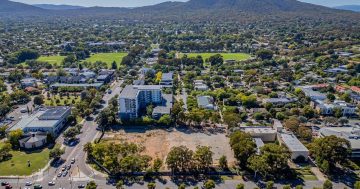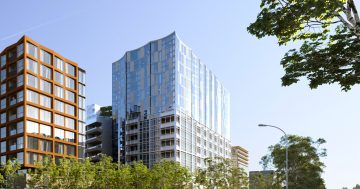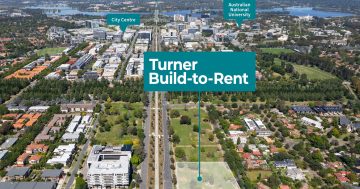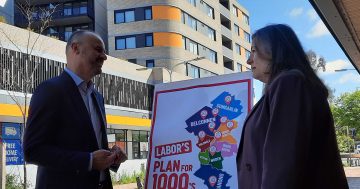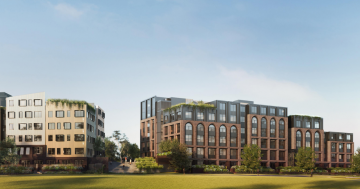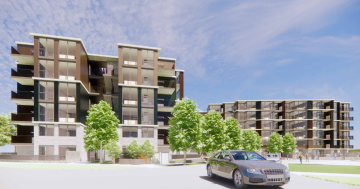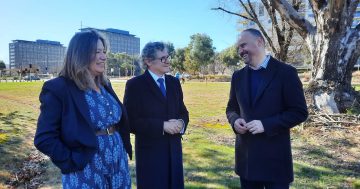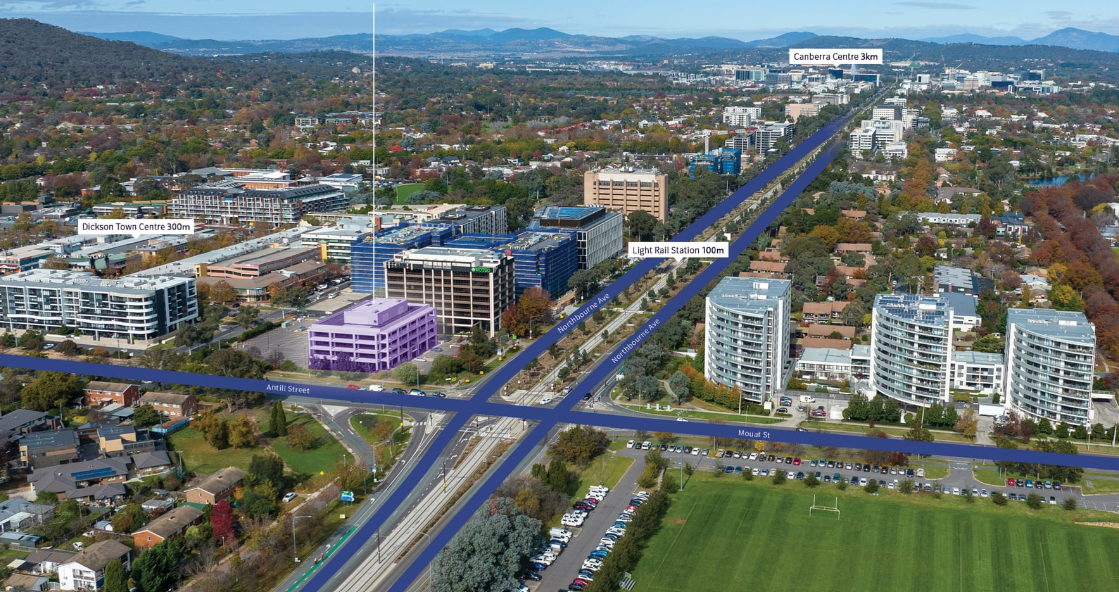
The build-to-rent site at 496 Northbourne Avenue in Dickson. Photo: CBRE Canberra.
The owners of a prime Northbourne Avenue corner site in Dickson are seeking a buyer/investor for a massive build-to-rent project that would add a further 435 units to the inner north.
The 6250 square metre Gateway site on the corner with Antill Street is currently occupied by an office building, but the government tenant vacates in November, opening the way for a four-building development proposal.
It would have 20,000 sqm of floor space, including 1900 sqm of retail/commercial space, 3000 to 4000 sqm for residential amenities and basement parking for 470 cars.
The CBRE Canberra listing says the site in the Dickson Group Centre is only 4 km from the CBD, is a focal point of significant urban renewal and is at the gateway to the Northbourne Avenue light rail corridor.
“It provides an opportunity for owner operators to purchase a turn-key development or investors to secure a prized asset with a pre-committed long-term management agreement in place with one of Australia’s leading operators,” the listing says.
CBRE Canberra’s Tristan Cotchett said the site owners, well-known Canberra developers John Russell and Wayne Gregory, had been considering the project for several years, but the lease expiry and the current rental environment in Canberra had aligned to take the proposal forward.
“They’re really just leveraging the strong fundamentals of Canberra as a residential market with obviously next to no vacancies and the highest apartment rents in the country,” Mr Cotchett said.
“They feel now’s the time. We’ve had quite a few institutional groups who have expressed strong interest in the property. We’ll be looking to get one of the groups in an exclusive dealing period to negotiate a takeout structure on the 435 units, which will be in excess of the end value of $200 million-plus.”
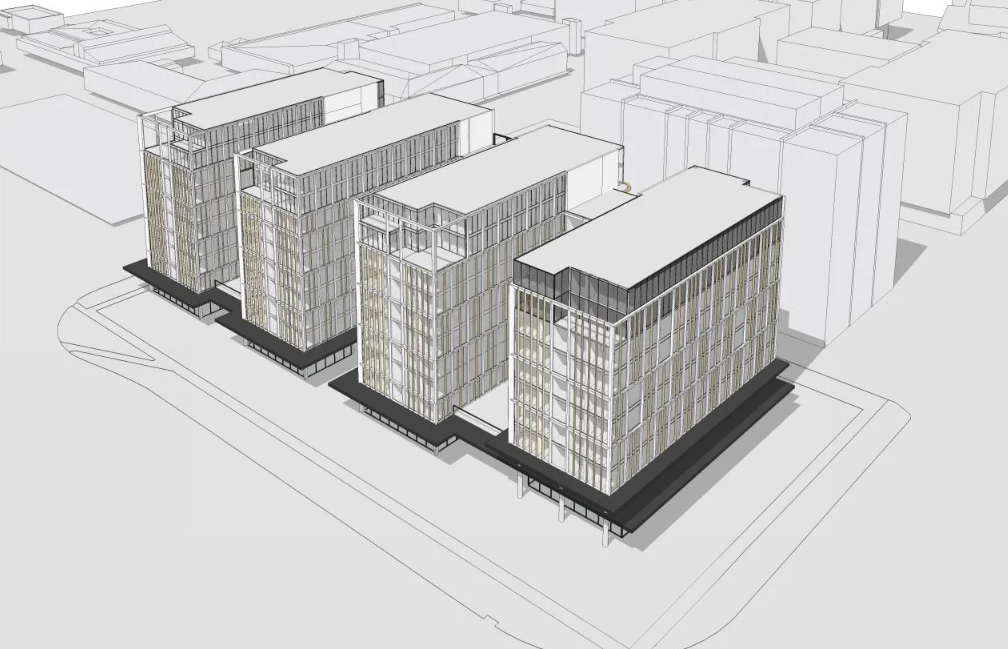
An early sketch of the build-to-rent proposal. Image: Supplied.
Mr Cotchett said build to rent would be a growing space in Canberra and the national capital was now on the third tier of investor interest after Sydney and Melbourne, but those strong fundamentals and the comparatively cheaper land were swinging them to the ACT.
“Land costs are right, we’ve got a transient population and we’ve got strong apartment rents, and it’s been strong fundamentals for seven to 10 years now. It’s not like just sort of peak for the short term,” he said.
Canberra’s housing shortage was well known, with contributing factors being the ACT Government’s slow land release program and the uncertainties in the construction sector, Mr Cotchett said.
The government is also supporting build-to-rent ventures to get more housing built, and late last year it announced a market sounding through the Suburban Land Agency to test interest from the private sector and community housing bodies.
Mr Cotchett said it was hoped there could be an exchange by November, with a development application lodged soon after for Mr Russell and Mr Gregory to develop the site on behalf of the third party, who would not settle until the project was completed, likely to be in the first quarter of 2026.
The expected return would be a net yield of 4 to 4.5 per cent, based on Canberra’s stand-out performance of the past five years, and higher than Sydney or Melbourne’s 3 to 3.75 per cent.
The type of residential amenities to be provided would depend on the investor group, Mr Cotchett said.
“It’s best to have their own model on what they actually add … you’ve got several amenity options that people throw out there like dog walking, concierge, cinemas, all of that,” he said.
“That’s all available because we’re not going with a DA-approved site. It’s a scheme that people can rework.”
Expressions of interest close on Thursday, 28 July.












